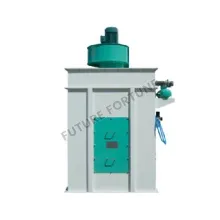Imagine a bustling woodworking shop, sawdust dancing in the air like confetti. In the midst of this productivity, there lies a silent threat—unregulated dust collectors. Now, let's dive into the regulations that safeguard both workers and businesses in this scenario.

In the world of manufacturing, dust collectors play a crucial role in maintaining a clean and safe environment. However, the lack of proper regulations can turn this essential tool into a potential hazard. Picture this: a small spark meeting a cloud of sawdust, creating a combustible mix that can lead to catastrophic consequences.
Dust collector regulations are guidelines designed to ensure the proper functioning and safety of these devices. From woodworking shops to industrial settings, these regulations aim to minimize risks associated with dust collection systems. But why are they so important?
Neglecting dust collector regulations is akin to playing with fire—quite literally. Fires and explosions resulting from accumulated dust are not uncommon. These incidents not only endanger the lives of workers but can also lead to substantial financial losses for businesses. In a world where safety should be paramount, adhering to regulations becomes non-negotiable.
To understand these regulations better, let's break down their key components. Dust collector regulations typically cover aspects such as system design, installation, maintenance, and regular inspections. Compliance with these elements not only ensures a safe working environment but also contributes to the longevity and efficiency of the equipment.
In the rush of daily operations, companies often make mistakes that can have severe consequences. Ignoring regular maintenance, underestimating the importance of proper installation, or using subpar equipment are pitfalls that can lead to non-compliance. Understanding these common mistakes is the first step toward rectifying them.
The benefits of adhering to dust collector regulations extend beyond mere legal compliance. Businesses that prioritize safety enjoy increased employee morale, reduced downtime due to accidents, and a positive reputation in the industry. Compliance is not just about ticking boxes; it's about fostering a culture of safety that pays dividends in the long run.
The world of regulations can be daunting, with updates and changes occurring regularly. Staying informed is key. Companies should invest in training programs for employees, keeping them abreast of the latest developments. Additionally, building relationships with regulatory bodies can provide valuable insights and guidance.
Compliance isn't a one-time affair; it's an ongoing commitment. Implementing best practices involves regular equipment checks, employee training, and a proactive approach to safety. By making compliance a part of the organizational DNA, businesses can not only meet regulatory requirements but also set industry benchmarks for safety.
In the realm of dust collector regulations, ignorance is not bliss—it's a potential disaster waiting to happen. By understanding, implementing, and championing these regulations, businesses can create environments that are not only productive but also safe for everyone involved.
Comments
Please Join Us to post.
0